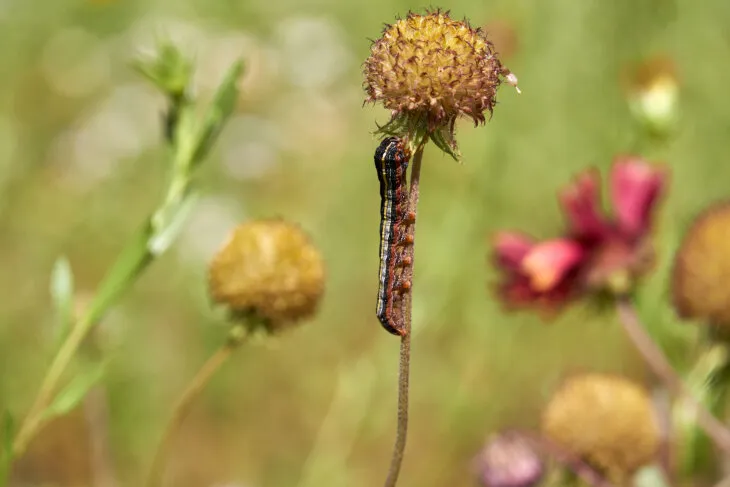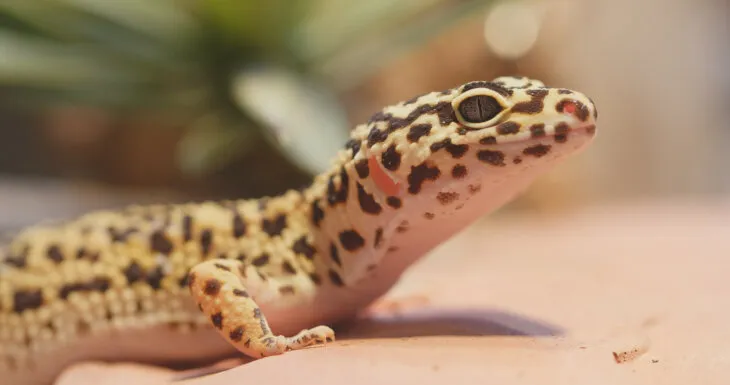
A leopard gecko’s diet is one of the cornerstones of their health and well-being. Being insectivores, their main sources of nutrients include a wide range of feeder insects. Are armyworms healthy food options for your leo?
Armyworms are not the best options for leopard geckos. They are major crop pests and like other wild-caught outdoor insects, there is a risk of pesticide exposure as well as pathogen transmission.
If you’d like to know in detail why armyworms are bad for leopard geckos, and what worms are better for them, read on!
Why Leopard Geckos Can’t Eat Army Worms
Armyworms may cause devastating economic damage, but they don’t bite or sting thus they’re not directly harmful to animals or humans.
However, your leopard gecko’s risk of being exposed to harmful chemicals, illness, and nutritional issues cannot be fully ignored.
Like any other wild-caught insects, armyworms may contain pesticides and pathogens that they can transmit to animals that prey on them.

Are Armyworms Part of a Leopard Gecko’s Natural Diet?
In their natural habitats, leopard geckos eat a wide variety of prey insects. They are opportunistic carnivores and will eat whatever they can catch.
In the wild, their diet includes beetles, crickets, spiders, scorpions, baby mice, small snakes, and even other species of geckos. Leopard geckos will try to eat any animal that’s small enough to fit in their mouth.
Leopard geckos live in the arid mountainous deserts throughout Pakistan, Iran, Northern India, and Afghanistan. These regions have sparse vegetation coupled with minimal rainfall.
’Armyworms’ is a broad term used for caterpillars of several moth species from the family Noctuidae.
They are major crop pests that leave a path of devastation in their wake thus, posing a serious problem for farmers. Armyworms are native to North America and prefer dense vegetation to complete their life cycle.
Considering that the natural habitats of leopard geckos and armyworms are clearly different, it’s enough to say that armyworms are not part of a gecko’s natural diet.
Why Are Armyworms Not Good for Leopard Geckos?
Armyworms are not normally raised as
When caught from the wild, chances are they’re not safe. When you feed your leo insects that haven’t been tested for potentially toxic substances they may be carrying, such as pesticides, you have no idea what you’re putting in your pet’s body.
Leopard geckos that are given wild-caught insects, short-term or long-term, can potentially experience any of the following:
Poisoning
Armyworms are not directly harmful to humans or animals. But when they feed on plants, pesticides, such as pyrethroids, are applied to kill these pests.
Your leopard gecko can have secondary exposure to these harmful chemicals when given wild-caught armyworms that have been sprayed with pesticides, which can eventually lead to sickness or even death.
Obesity
The larval stages of insects have higher fat (10-60% fat in dry matter) than adults. Caterpillars are among the insects with the highest fat content. The total fat content in caterpillars (Lepidoptera) is from 8.6 to 15.2 g per 100 g of insects.
Obesity is a very likely risk in leopard geckos whose diets mainly consist of armyworms larvae.
Malnutrition
The nutritional content of armyworms will depend to a large extent on the type and developmental stage of the insect. The season and the type of feed also influence their nutritional makeup.
If armyworms comprise the bulk of a leopard gecko’s diet, it does not guarantee that your pet has a complete and balanced diet.
In fact, it can increase your leo’s risks of developing specific nutritional deficiencies.
Illness
The risk of transmission of infectious diseases from armyworms should also be considered. Their gut microbiome could be a suitable medium for the growth of pathogenic microorganisms.
Various types of Enterobacteriaceae and sporulating bacteria can be identified and subsequently isolated from raw insects entering them most likely during contact with the soil.

What Leopard Geckos Should Eat Instead Of Armyworms
Leopard geckos that are kept as pets thrive with variety in their diet. Feeder insects can easily be bought in stores or raised by leo owners.
- Mealworms (Read our mealworm guide)
- Wax worms (Read our wax worm guide)
- Silkworms (Read our silkworm guide)
- Dubia roaches (Read our dubia roach guide)
and other feeder insects are safe when bought from a trusted source.
As a rule of thumb, the live insects should not be bigger than the space between a leopard gecko’s eyes.
While these commercially available feeder insects are safe for them to eat, it’s important for leo owners to know their nutritional value.
This way, you can avoid giving way too much or too little, and also determine exactly how much of each essential nutrient is going into your leopard gecko’s body.
Overfeeding and underfeeding are common problems in pet leos.
The nutritional value of feeder insects can vary significantly. Some contain more protein, while some have more fat.
The calcium to phosphorus ratio also varies between feeder insects. Variety in your leo’s diet can help ensure that it has a complete and balanced diet.
If you are looking for worms for leos that are better than armyworms, read our article on the best worms for leopard geckos!
Conclusion
Leopard geckos may be insectivores but not all insects are good for them. Even if wild insects abound in your backyard, the potential health implications are just too serious to ignore.
Storebought feeder insects are still the best choices for your leopard gecko’s health and nutrition.
- Enchi Ball Python: A Unique and Stunning Morph of Python regius - March 27, 2025
- Emerald Tree Monitor: The Enigmatic Green Guardian of the Rainforest - March 26, 2025
- The Egyptian Cobra (Naja haje): A Fascinating Serpent - March 25, 2025
